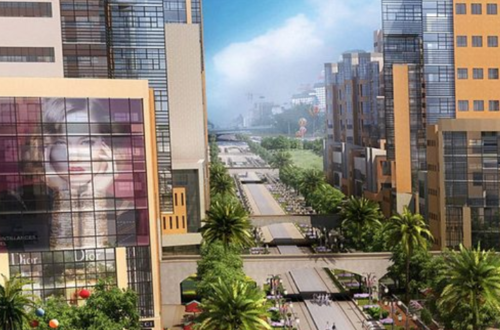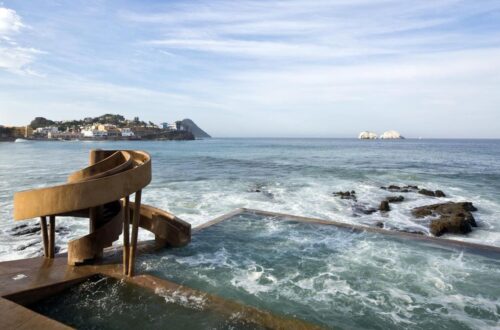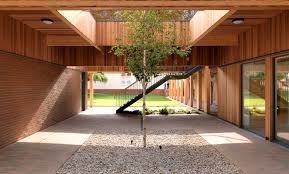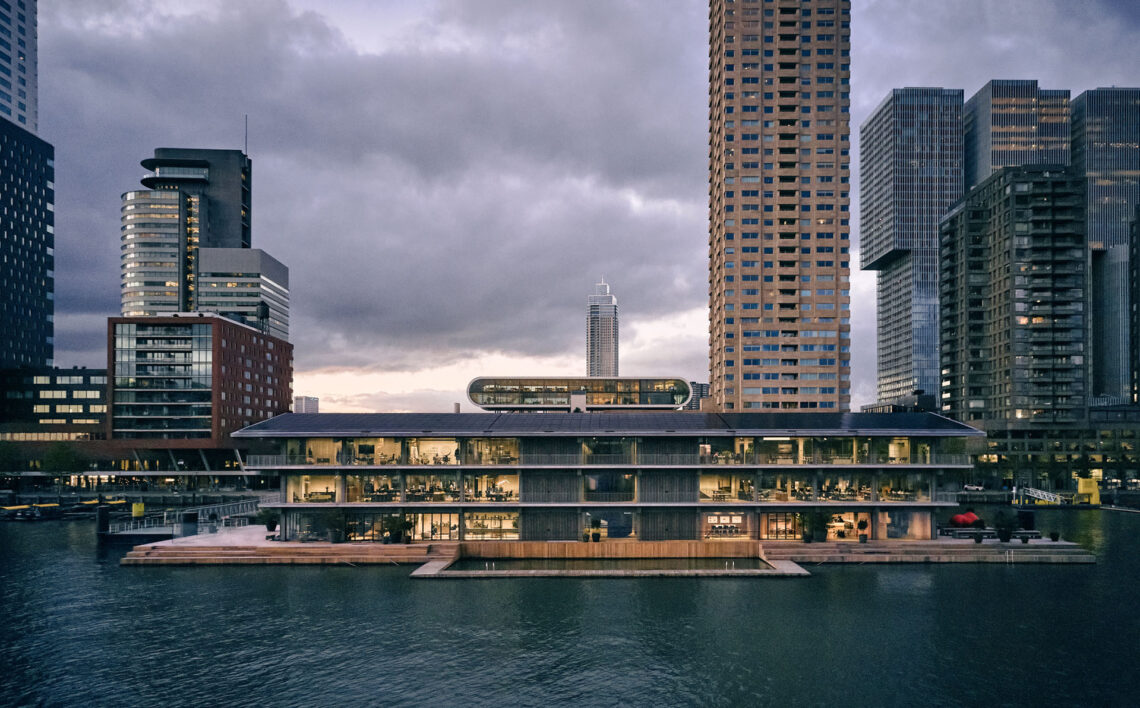
Architectural Solutions for Rising Sea Levels in Coastal Cities
Ever since the start of mankind, people have loved being close to water – shoreline cities boomed with port locations near shipping canals and nowadays a beach-front home can represent a dream property. However, with the continuous rise in carbon emissions and the ever-present issue of global warming, many coastal cities and shorelines are being flooded and in high-risk due to rising sea levels. This article explores various innovative methods architects worldwide have come up with to combat such pressing concerns. Read on to find out more…
Preventative design strategies
Seawalls and barriers
Perhaps one of the most iconic and popular ways to combat rising sea levels is to build physical barriers and seawalls, in order to prevent water intrusion. Modern designs can integrate these barriers into the landscape aesthetically, preserving public access and waterfront views. For example, Harbor Place in Haverhill, MA, features a 16-foot-high flood wall that doubles as a boardwalk, combining functionality with visual appeal. This approach demonstrates that practical infrastructure can also enhance the urban environment, balancing protection with maintaining the connection between the community and the waterfront.
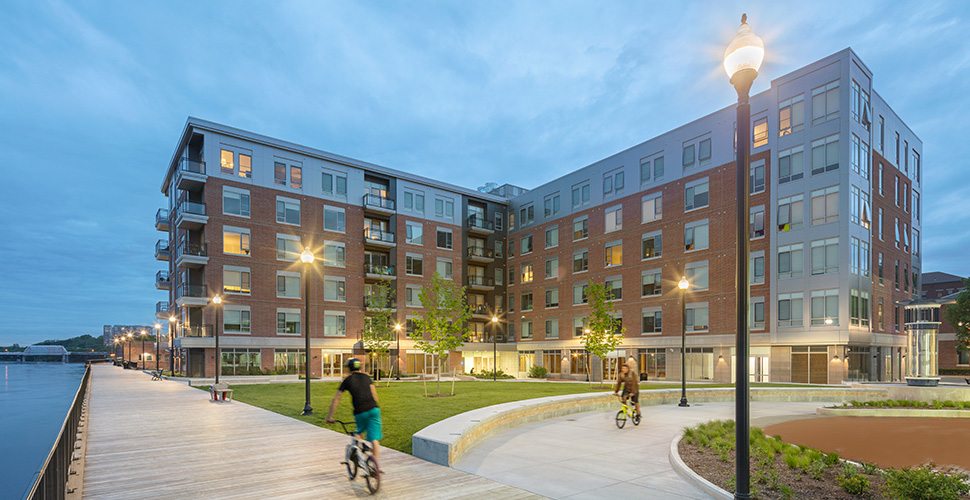
Yet, on the other hand, an overuse of barriers can separate people from the waterfront, thus removing public access. Architects are balancing on an intricate line between protecting cities and people, as well as preserving views and coastal access.
Water-resistance materials
Another popular approach to rising coastal sea levels is to use materials that are easily-replaceable or water-resistant. Moisture-resistant drywall, watertight doors, and pressure relief valves for below-grade spaces ensure that buildings can recover quickly from flooding. These materials can be easily replaced or maintain their integrity when wet, reducing long-term damage and maintenance costs. This approach focuses on resilience and adaptability, ensuring that buildings can withstand and recover from flood events with minimal disruption.
Landscaping zones
Different to the previous two methods, landscaping zones are also covered by preventative design strategies. This involves creating areas where water can safely accumulate and then either recede naturally or be removed. These zones can be integrated into public spaces, parks, and urban green areas, providing a dual function of aesthetic appeal and practical flood management. By using natural topography and vegetation, these designs can absorb excess water, reduce runoff, and mitigate the impact of floods, contributing to a more sustainable and resilient urban environment. Landscaping zones can also enhance the natural beauty of urban areas, creating multifunctional spaces that support both ecological health and human enjoyment.
Neighbourhood-wide solutions
Addressing sea-level rise on a larger scale involves rethinking the design and infrastructure of entire neighbourhoods. Miami Beach’s initiative to raise street levels above projected flood levels is a prime example. This creates unique, below-grade areas that add character to urban developments. Such comprehensive solutions not only protect individual buildings but also ensure that entire communities can adapt to rising sea levels, fostering a cohesive and resilient urban fabric.
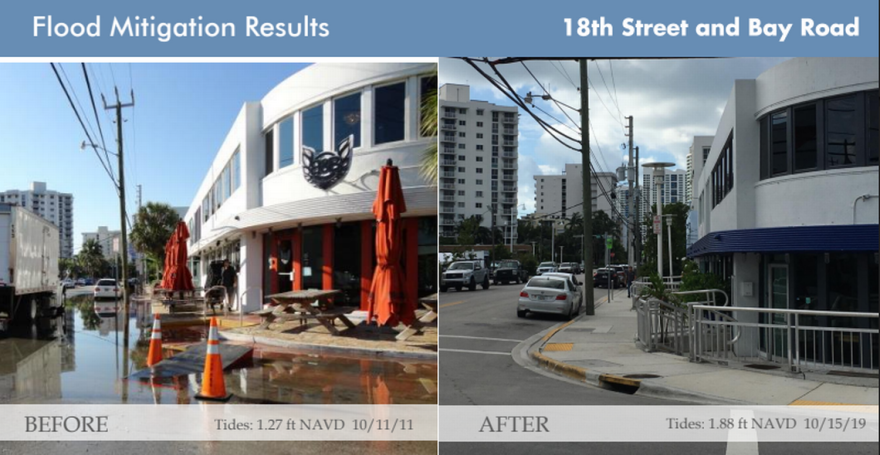
Construct living shorelines
Another more creative and integrative approach would be to build living shorelines. Much like the name suggests, these shorelines use natural elements like vegetation to absorb and manage water during high tides and storms. This green infrastructure approach offers a more sustainable and aesthetically pleasing alternative to hard barriers. It can also enhance local ecosystems by providing habitats for wildlife. However, the suitability of this approach depends on specific coastal conditions, and it may not be viable in all areas. When feasible, living shorelines can significantly reduce erosion and improve the natural resilience of coastal regions.

Real-life case studies
After so much discussion in regards to techniques and tactics used for rising sea levels, let’s finally take a look at real-world examples of cities using innovative ways to become coastal resilient for the future!
Waterwoningen by Architectenbureau Marlies Rohmer
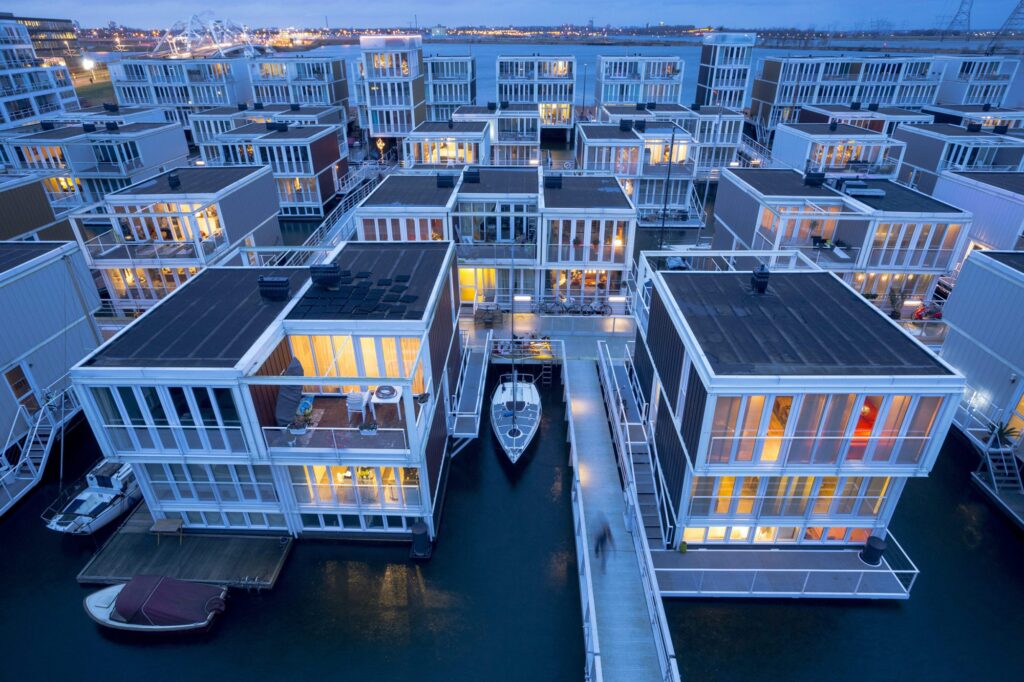
Known to most people and curious kids as “floating houses,” this project taken on by the architectural firm, Marlies Rohmer, not only addresses environmental challenges but also contributes to the reinvigoration of urban areas. The region around the build features a density similar to the central Jordaan district, with around 100 homes per hectare. Which is why these homes soon acted as a significant solution to Holland’s modern housing needs.
The actual design of the Waterwoningen is both compelling yet practical. These floating houses rest on jetties, which each accommodate four to twenty-five houses, thus creating a dynamic community. Moreover, three towering “pile dwelling” punctuate the landscape, aligning with bridges connecting jetties. Ultimately, this intentional arrangement makes sure water views are not disturbed, blending architectural innovation with the natural landscape.
Vertical City by Luca Curci Architects in Dubai, United Arab Emirates
This stunning yet ambitious project aims to establish a zero-energy “city-building.” By Luca Curci Architects, Vertical City proposes a water-settled infrastructure designed for 25,000 residents. Much like the image suggests, the building will integrate various renewable energy sources, for example, wind and water turbines, solar panels, energy storage solutions, water desalination as well as inclusive food production and farming. Additionally, the project is dedicated to reimagine urban living by eliminating suburban sprawl, while promoting a healthier lifestyle.

Although it is quite a challenge to develop land in contact with water, such difficulties also offer a compelling canvas for reimagining and restructuring urban landscapes. By adopting a holistic and sustainable design approach, we can turn potential challenges into catalysts for positive change, creating resilient, inclusive, and harmonious urban environments along coastlines.
Water Cabin by Olson Kundig

The Water Cabin by Olson Kundig continues Seattle’s long tradition of floating homes. Situated in a floating home community on Portage Bay, just south of the University of Washington, it brings a cabin-like feel to an urban setting. The home sits low to the water and is modest in size, with a thoughtfully arranged interior spread across two levels to enhance connections to the surrounding marine environment. The cabin’s material choices reflect the weathered, informal aesthetic of a traditional cabin. The lightly stained knotty western red cedar exterior siding is designed to weather over time with minimal upkeep. Durable, low-maintenance metal elements, such as galvanised steel and flame-sprayed zinc, are included to withstand the harsh marine environment and will complement the cedar siding as it silvers with age.
Floating Office Rotterdam by Powerhouse Company
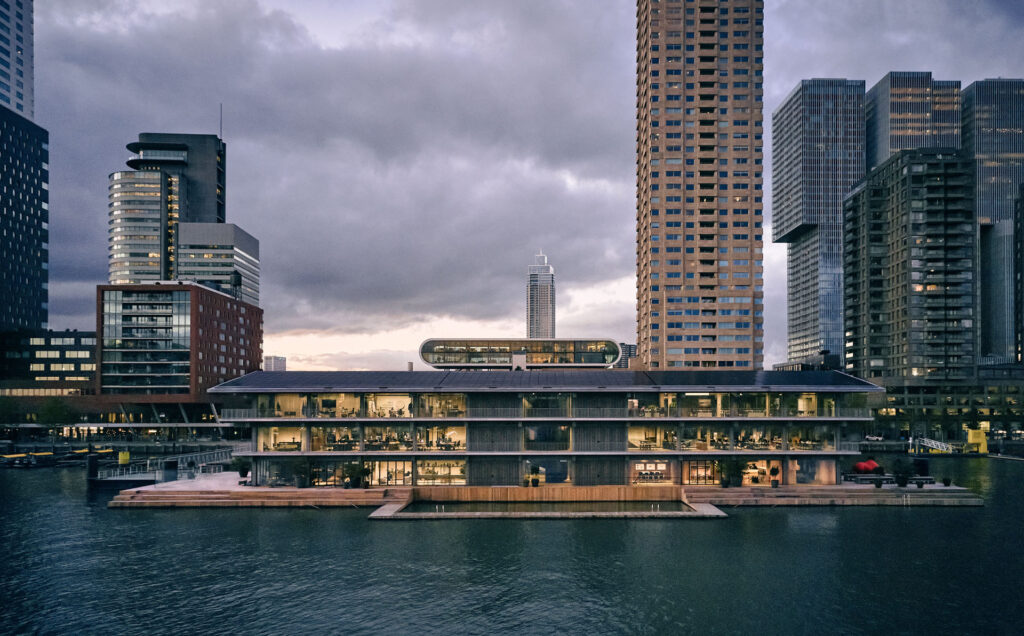
Floating Offices Amsterdam, designed by Powerhouse Company, exemplifies innovative and sustainable architecture. Nestled in the harbour of Rijnhaven, this floating office complex redefines urban workspace with a strong connection to its aquatic surroundings. The design incorporates expansive glass facades that flood the interiors with natural light and provide stunning views of the water. The exterior features a combination of robust, weather-resistant materials, including timber and steel, ensuring durability and minimal maintenance. This thoughtful material selection not only withstands the harsh marine environment but also blends seamlessly with the natural beauty of the harbour. Inside, flexible workspaces and communal areas promote collaboration and creativity, reflecting the forward-thinking ethos of the Floating Offices Amsterdam. As an eco-friendly structure, it utilises renewable energy sources and advanced insulation techniques, setting a new standard for floating architecture in urban environments.
Sources
- Indiana University. “Sea Level Rise: Adaptation Strategies: ERIT: Environmental Resilience Institute Part of the Prepared for Environmental Change Grand Challenge: Indiana University.” Environmental Resilience Institute Part of the Prepared for Environmental Change Grand Challenge, 2022, eri.iu.edu/erit/strategies/sea-level-rise.html.
- Magazine, Smithsonian, and Jimmy Stamp. “10 Architectural Schemes That Could Help Us Adapt to Rising Seas.” Smithsonian Magazine, 14 Oct. 2014, www.smithsonianmag.com/innovation/10-architectural-schemes-that-adapt-to-rising-seas-180952893/.
- “Resilient Design Strategies for Coastal Cities.” HOK, www.hok.com/ideas/research/resilient-design-strategies-for-coastal-cities/.
- Slowey, Kim. “How Architects and Builders Can Combat Sea Level Rise through Design.” Smart Cities Dive, 11 June 2017, www.smartcitiesdive.com/news/how-architects-and-builders-can-combat-sea-level-rise-through-design/442510/.
- Zamora, Francesc. “Amphibious Architecture: Designing Resilient Coastal Communities for the Future.” Journal, 7 Dec. 2023, architizer.com/blog/inspiration/stories/amphibious-architecture-floating-buildings-resilient-coastal-communities/.


